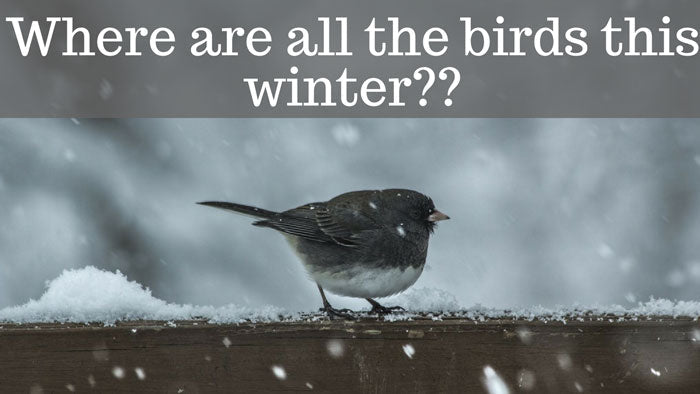Offer
Provide additional details about the offer you're running.
Provide additional details about the offer you're running.
Provide additional details about the offer you're running.

This is a question we have faced in person in both of our Ottawa stores and online via our website, Facebook and Instagram profiles. With winter officially arriving today, many are wondering where the throngs of birds we are accustomed to seeing at our feeders have disappeared to.
While this statement might not apply to everyone out there, as there are many that are coming forth with robust reports, it certainly is something we have noticed at our feeders at our home. What would typically be a steady flow of birds to our feeders throughout the day has in its simplest terms, become sporadic.
When we first noticed it, it didn’t take long for others to communicate their lack of birds to us and found that it is a problem that seems to be plaguing much of eastern Ontario. Before assuming the worst, we always address the fact that the birds have not perished through death but rather have likely moved on to different locations depending on the specific needs of the bird in question.
To dive in a little further, here are a couple of reasons we believe to be the main contributing factors leading to the decline in bird observations here in the Ottawa area.
Think way back to 2012 and the drought conditions we experienced here in Ontario. It was dry and not much was successful in growing. While farmers certainly lament about the growing conditions so too did our wildlife, including birds. Again, these birds did not die of starvation, they simply moved on to greener pastures, so to speak. Birds will always head to areas that offer them everything they need, food, shelter and water and in some cases, many do not return unless conditions worsen in their newfound locations.
We have recovered with lush growth since 2012 , and this year was no different. With abundant amounts of rain and natural foods such as grasses, berries, seeds, nuts and more, our feeders have had considerable competition this year as well.
This fall season was a wild one that left not only a lot of humans displaced but birds as well. As tropical storms rolled through the southern United States, here in Ontario, we had an irregularly warm fall season with temperatures around the 30 degrees Celsius mark. This alone sent birds into a frenzy with many migrating much later than usual and others not leaving at all.
Additionally, the weather actually pushed some birds our way that should have never otherwise been pushed that high and as such, birders in certain locations were treated to a number of rare sightings over the past couple of months.
As we as humans continue to develop in wild places, this too is something that alters the behavior of birds. Whether we are pushing birds out of their natural habitat or removing too many natural food sources, we must continue to be mindful of our expansion of a species and do our part to ensure we can all live in harmony.
High Quality Blend